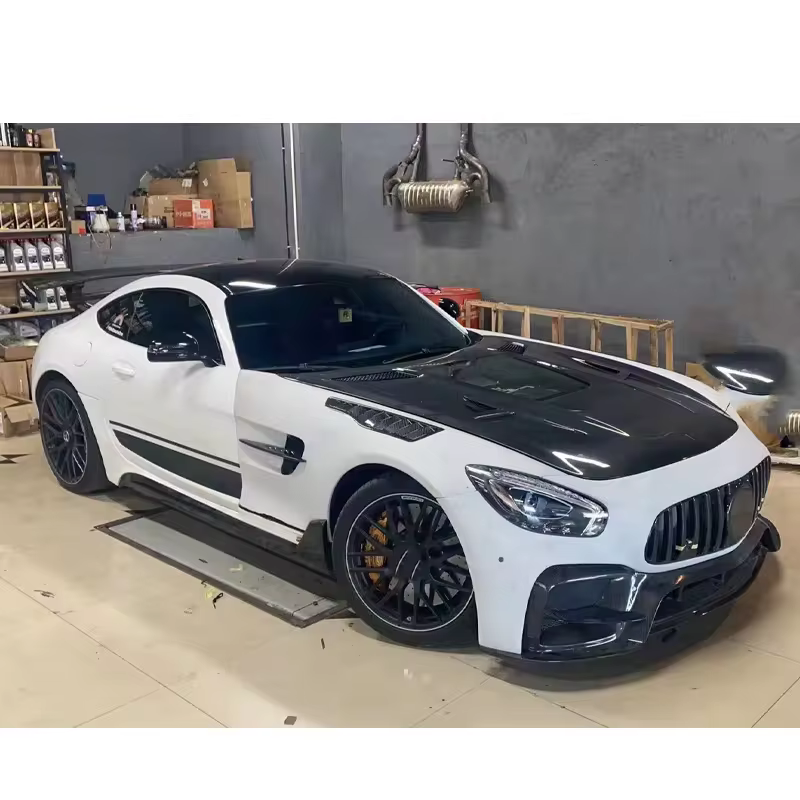Cost Analysis of Carbon Fiber Vehicle Retrofit
2024
Introduction:
Carbon fiber vehicle retrofitting has gained popularity among automotive enthusiasts seeking to enhance both the aesthetics and performance of their vehicles. However, understanding the costs involved in such retrofit projects is essential for budget planning and decision-making. In this article, we delve into the price ranges of carbon fiber retrofit components, factors influencing retrofitting costs, and recommend high-value retrofitting solutions.
Price Ranges of Carbon Fiber Retrofit Components:
Exterior Components:
●Carbon Fiber Hoods: $500 - $2000
●Carbon Fiber Spoilers: $200 - $800
●Carbon Fiber Side Mirrors: $100 - $500
●Carbon Fiber Body Kits: $1000 - $5000 (depending on complexity)
Interior Components:
●Carbon Fiber Dash Trims: $100 - $500
●Carbon Fiber Steering Wheels: $200 - $1000
●Carbon Fiber Interior Panels: $300 - $1000
Performance Components:
●Carbon Fiber Air Intake Systems: $200 - $1000
●Carbon Fiber Exhaust Systems: $500 - $3000
●Carbon Fiber Strut Bars: $100 - $500

Factors Influencing Retrofitting Costs:
1.Material Quality: The quality of carbon fiber used in the components significantly affects their cost. High-quality carbon fiber with advanced manufacturing processes commands a premium price compared to lower-grade materials.
2.Complexity of Design: Intricate designs or customizations increase the production costs of carbon fiber components, resulting in higher retail prices. Simple, standardized designs are typically more affordable.
3.Brand Reputation: Established brands known for their quality and craftsmanship often charge higher prices for their carbon fiber components compared to lesser-known brands. However, the reputation and reliability of the brand can justify the higher cost.
4.Fitment and Installation: Proper fitment and installation of carbon fiber components may require additional labor costs if professional assistance is needed. Custom fitment or modifications can also increase installation expenses.
5.Quantity and Bundle Deals: Purchasing multiple carbon fiber components or opting for bundle deals offered by suppliers can sometimes lead to cost savings compared to buying individual pieces separately.
High-Value Retrofitting Solutions:
●Prioritize Essential Components: Focus on upgrading essential components that contribute to both aesthetics and performance, such as hoods, spoilers, and air intake systems. This ensures optimal value for money spent on retrofitting.
●Research and Compare Prices: Thoroughly research various suppliers and compare prices for the same or similar carbon fiber components. Look for reputable suppliers offering competitive pricing without compromising on quality.
●Consider DIY Installations: For enthusiasts with mechanical aptitude and tools, consider performing the installation of carbon fiber components yourself to save on labor costs. However, ensure proper knowledge and precautions are taken to avoid damage or improper fitment.
●Opt for Mid-Range Brands: Explore mid-range brands that offer a balance between quality and affordability. These brands often provide decent quality carbon fiber components at more accessible price points compared to premium brands.
Conclusion:
Understanding the cost dynamics of carbon fiber vehicle retrofitting is essential for enthusiasts embarking on customization projects. By exploring the price ranges of carbon fiber components, considering factors influencing retrofitting costs, and opting for high-value retrofitting solutions, enthusiasts can achieve their desired vehicle enhancements while staying within budget constraints. Prioritizing essential components, researching prices, considering DIY installations, and opting for mid-range brands are strategies to maximize the value of carbon fiber retrofitting investments.


 EN
EN
 AR
AR
 BG
BG
 HR
HR
 CS
CS
 DA
DA
 NL
NL
 FI
FI
 FR
FR
 DE
DE
 EL
EL
 HI
HI
 IT
IT
 JA
JA
 KO
KO
 NO
NO
 PL
PL
 PT
PT
 RO
RO
 RU
RU
 ES
ES
 SV
SV
 TL
TL
 ID
ID
 SR
SR
 SK
SK
 UK
UK
 VI
VI
 TH
TH
 TR
TR
 FA
FA
 AF
AF
 MS
MS
 GA
GA
 CY
CY
 IS
IS
 HY
HY
 AZ
AZ
 KA
KA
 MY
MY
 ONLINE
ONLINE